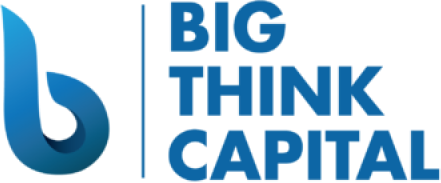Navigating the Implications of the Federal Reserve’s 2025 Interest Rate Hike for Small Businesses
Estimated reading time: 5 minutes
- Understand the impact of rising interest rates on small business financing.
- Implement strategies to manage business credit effectively.
- Optimize working capital in a high-interest environment.
- Explore equipment financing options wisely.
- Consult with financial experts to enhance funding strategies.
Table of Contents
- Understanding the Federal Reserve’s Interest Rate Hike
- Why Interest Rates Matter for Small Businesses
- Implications of Higher Interest Rates on Small Business Financing
- Strategies for Managing Business Credit Post-Rate Hike
- Optimizing Working Capital in a High-Interest Environment
- Leveraging Equipment Financing Options
- Practical Takeaways for Small Business Owners
- Conclusion: Navigating the Future of Small Business Financing
- FAQ
Understanding the Federal Reserve’s Interest Rate Hike
The Federal Reserve adjusts interest rates in response to economic conditions and inflation rates, aiming to balance growth and stability. As of early 2025, the Fed announced a significant increase in interest rates to combat persistent inflation and ensure sustainable economic growth.
Why Interest Rates Matter for Small Businesses
Interest rates directly influence borrowing costs. For small businesses, higher interest rates mean:
- Increased expenses on loans and credit.
- Greater difficulty in securing financing due to stricter lending standards.
- Potentially lower consumer spending if interest rates lead to higher costs of living.
For business owners, it is crucial to understand these dynamics to navigate your financial strategies effectively.
Implications of Higher Interest Rates on Small Business Financing
- Increased Cost of Capital
Higher interest rates lead to increased borrowing costs. A business seeking a line of credit or loan may face higher monthly payments, affecting cash flow. - Stricter Lending Criteria
With interest rates rising, lenders may tighten their lending criteria. Small businesses with less robust credit profiles or inconsistent revenue streams may find it more challenging to secure financing. - Impact on Credit Decisions
Businesses may reconsider how much credit they need or delay financing decisions due to increased costs.
Strategies for Managing Business Credit Post-Rate Hike
To adapt to the new financial environment, small business owners should consider the following strategies:
- Review Your Financial Health
Assess your business’s current financial health. Gather financial statements, review cash flow, and adjust your budget to prepare for increased costs associated with debt repayment. - Reassess Existing Debt
Evaluate your current debt obligations. Look for opportunities to refinance existing loans at a lower rate before further increases occur or if you have a solid credit history. - Prioritize Short-Term Financing Needs
Focus on short-term financing solutions such as lines of credit or working capital advances. These options typically have flexible repayment terms and faster approval times, allowing businesses to manage cash flow needs effectively.
Optimizing Working Capital in a High-Interest Environment
In times of rising interest rates, optimizing working capital becomes crucial. Here are some actionable steps:
- Streamline Operations
Look for cost-saving opportunities within your operations. Inventory management, supplier negotiations, and process improvements can free up cash flow. - Enhance Accounts Receivable Management
Implement new strategies to improve your collections process. Consider offering discounts for early payments or establishing clear payment terms to accelerate cash inflows. - Build a Cash Reserve
Establishing a cash reserve can provide a buffer against unexpected expenses or economic downturns. Aim to save enough to cover at least 3-6 months of operating expenses.
Leveraging Equipment Financing Options
For business owners considering expansion or upgrades to their operations, equipment financing can be a valuable tool, even in a high-interest scenario. Here’s how to approach it:
- Research Financing Options
Explore various financing options tailored for equipment purchases, such as traditional loans, leasing agreements, or equipment financing specifically designed for tax benefits. - Calculate Total Cost of Ownership
When assessing equipment financing, consider all associated costs, including interest, maintenance, and potential tax deductions. This holistic view will help in making informed financial decisions. - Choose the Right Time to Invest
Timing your investments can be vital. If you can secure financing before the next expected rate hike, or during promotional periods with lower rates, you can potentially save significantly on costs.
Practical Takeaways for Small Business Owners
- Act Early
Don’t wait for interest rates to rise further. Assess your borrowing needs now and consider refinancing existing debt before costs escalate. - Improve Financial Literacy
Take the time to understand financial metrics and market trends that affect your business. This knowledge will empower you to make informed decisions regarding funding. - Consult with Financial Experts
Consider consulting with funding experts, like those at Big Think Capital, to explore funding solutions tailored to your unique business situation. They can provide insights into options that may work best for you.
Conclusion: Navigating the Future of Small Business Financing
The Federal Reserve’s interest rate hike in 2025 presents challenges for small business owners looking to secure funding. By adjusting your financial strategy, optimizing working capital, and considering equipment financing options, you can position your business for success.
Monitoring economic trends and understanding how they affect your financing landscape is crucial. For tailored strategies and expert advice, reach out to Big Think Capital to explore how we can assist you in heating up your business financing options.
FAQ
What should small businesses do to prepare for interest rate hikes?
Small businesses should assess their financial health, consider refinancing existing debt, and prioritize short-term financing solutions.
How will higher interest rates impact consumer spending?
Higher interest rates can lead to increased costs of living, which might result in lower consumer spending.
What are some advantages of equipment financing?
Equipment financing allows businesses to acquire necessary equipment without a heavy upfront cost, and many options provide tax benefits.






